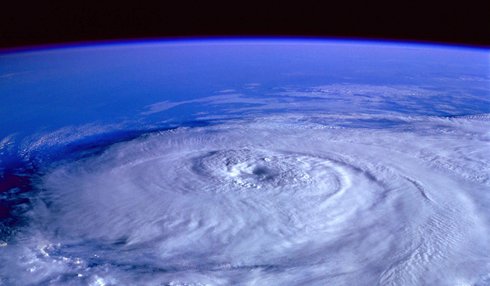Understanding Climate Change Modelling: Predicting Our Planet’s Future
What is Climate Change Modelling?
Climate change modelling refers to the use of mathematical and computational techniques to simulate the behavior of the Earth's climate system. Models are created to represent complex processes such as the interactions between the atmosphere, oceans, land surfaces, and ice sheets. By incorporating different variables, scientists can simulate how the climate may change over time under various conditions, such as different levels of greenhouse gas emissions or changes in solar radiation.
The primary goal of climate change models is to predict the potential impacts of climate change, including shifts in temperature, precipitation patterns, sea-level rise, and extreme weather events. These predictions can inform policy decisions, guide mitigation efforts, and help prepare societies for future climate challenges.
Components of Climate Models
A climate model is typically divided into several key components that represent different parts of the Earth's climate system. These include:
1. Atmosphere
The atmosphere plays a crucial role in regulating the Earth's temperature and weather patterns. Climate models incorporate atmospheric processes such as cloud formation, wind circulation, and the greenhouse effect. The interactions between different layers of the atmosphere, such as the troposphere and stratosphere, are essential for understanding climate dynamics.
2. Oceans
Oceans act as the planet's heat reservoir, storing and redistributing heat around the globe. Climate models simulate ocean circulation patterns, including surface currents, deep ocean currents, and the exchange of heat between the oceans and atmosphere. Changes in sea surface temperature (SST) can significantly influence weather patterns and contribute to phenomena like El Niño and La Niña.
3. Land Surfaces
Land surfaces, including forests, deserts, and urban areas, influence the climate through processes like albedo (reflectivity), heat absorption, and carbon sequestration. Climate models incorporate changes in land use, such as deforestation or urbanization, and how these affect local and global climates. For example, a deforested region may absorb more heat and contribute to local warming.
4. Ice Sheets and Glaciers
Ice sheets and glaciers are critical components of the Earth's climate system, affecting sea levels and reflecting solar radiation. Climate models incorporate the dynamics of ice sheet melting, glacier movement, and the potential for ice-albedo feedback, which can amplify climate warming.
5. Carbon and Greenhouse Gases
The concentration of greenhouse gases like carbon dioxide (CO₂), methane (CH₄), and nitrous oxide (N₂O) is one of the primary drivers of climate change. Climate models simulate the sources and sinks of these gases, including emissions from human activities (e.g., fossil fuel combustion, agriculture) and natural processes (e.g., volcanic activity, forest fires). Models also account for carbon feedback mechanisms, such as the ability of forests and oceans to absorb CO₂.
Types of Climate Models
There are several different types of climate models, each with its own level of complexity and application. The three main types of climate models are:
1. Energy Balance Models (EBMs)
Energy Balance Models are the simplest type of climate model. They focus on the balance between the energy the Earth receives from the Sun and the energy the planet radiates back into space. EBMs use basic principles of thermodynamics to calculate the Earth's average temperature based on solar radiation, albedo, and heat loss to space. While EBMs provide useful insights into broad temperature trends, they do not capture the full complexity of climate systems, such as weather patterns and feedback mechanisms.
2. General Circulation Models (GCMs)
General Circulation Models are much more complex and sophisticated than EBMs. GCMs simulate the interactions between the atmosphere, oceans, land surfaces, and ice sheets in three dimensions. They divide the Earth into a grid, with each grid point representing a region of the climate system. GCMs use differential equations to model the movement of air, water, and heat throughout the Earth's atmosphere and oceans. They are capable of simulating long-term climate patterns and are widely used for climate projections.
GCMs can provide insights into regional climate patterns, such as temperature anomalies, precipitation changes, and extreme weather events. They are also used to model future climate scenarios based on different levels of greenhouse gas emissions, allowing scientists to explore how different mitigation strategies might affect future climates.
3. Earth System Models (ESMs)
Earth System Models are the most comprehensive climate models, incorporating not only atmospheric, oceanic, and land processes but also biogeochemical cycles, such as the carbon cycle and nutrient cycling. ESMs simulate how the climate system interacts with ecosystems, carbon sinks, and other environmental factors. They are used to explore the potential impact of climate change on biodiversity, ecosystems, and human societies.
ESMs are particularly valuable for studying the feedback mechanisms in the climate system, such as how melting ice sheets may release more methane, a potent greenhouse gas, from permafrost. These models are also critical for understanding how changes in the climate system might influence the Earth's carbon balance, leading to potential tipping points.
Applications of Climate Change Modelling
Climate change models have a wide range of applications in science, policy, and environmental management. Some of the key areas where climate models are used include:
1. Climate Projections
One of the primary uses of climate models is to make projections of future climate conditions. By inputting different scenarios of greenhouse gas emissions and other factors, scientists can generate projections of temperature, precipitation, sea level rise, and extreme weather events. These projections are used to assess the potential impacts of climate change on ecosystems, agriculture, infrastructure, and human health.
2. Policy and Decision-Making
Climate models provide valuable information to policymakers who are working to mitigate the impacts of climate change. By understanding how different emission scenarios might affect global temperatures and weather patterns, governments can make informed decisions about climate policies, such as carbon pricing, renewable energy investments, and deforestation control. Models also help in setting climate targets, such as the 1.5°C and 2°C targets set by the Paris Agreement.
3. Risk Assessment and Adaptation
Climate models are used to assess the risks posed by climate change and to develop adaptation strategies. For example, models can predict how sea-level rise may impact coastal communities, allowing for the development of flood defences or relocation plans. Similarly, models help in assessing how changes in temperature and precipitation will affect crop yields, informing agricultural practices and food security strategies.
4. Extreme Weather Events
Climate models are used to predict and understand extreme weather events, such as heatwaves, storms, and droughts. By simulating different climate scenarios, models can help identify areas that are most vulnerable to extreme events and provide guidance on how to prepare for and mitigate these events.
Challenges in Climate Modelling
While climate models are essential tools for understanding and predicting climate change, they face several challenges:
1. Uncertainty in Projections
One of the major challenges in climate modelling is the uncertainty associated with future projections. Climate models depend on a variety of input data, including greenhouse gas concentrations, solar radiation, and land use patterns. The future trajectory of these factors is uncertain, and small changes in input data can lead to significant differences in model outputs.
2. Resolution and Complexity
Higher-resolution models that capture more detailed features of the climate system require more computational resources. This trade-off between resolution and computational cost is a significant challenge in improving model accuracy. Additionally, capturing the full complexity of climate interactions—such as cloud formation, ocean currents, and feedback mechanisms—remains difficult.
3. Model Calibration
Calibrating climate models to match observed climate data is a critical challenge. Models need to be validated against historical data to ensure their predictions are realistic. However, due to the complexity of the climate system, it is difficult to create a perfect calibration.
4. Feedback Mechanisms
Many climate models struggle to capture the full range of feedback mechanisms within the climate system. For example, the release of methane from thawing permafrost, the melting of ice sheets, and changes in cloud cover can amplify or dampen climate change. These feedbacks are difficult to model accurately due to their complexity and unpredictability.
Source: OpenAI by Tim Williams, Scientific Research Team (Released February 2025)
The ability to predict how the Earth's climate will evolve in response to various factors—such as greenhouse gas emissions, deforestation, and industrialisation—has become a central task for climate scientists.
Climate change modelling is a tool that helps scientists understand and predict the future state of the planet. In this article, we will explore what climate change modelling is, how it works, the different types of models used, their applications, and the challenges they face.


